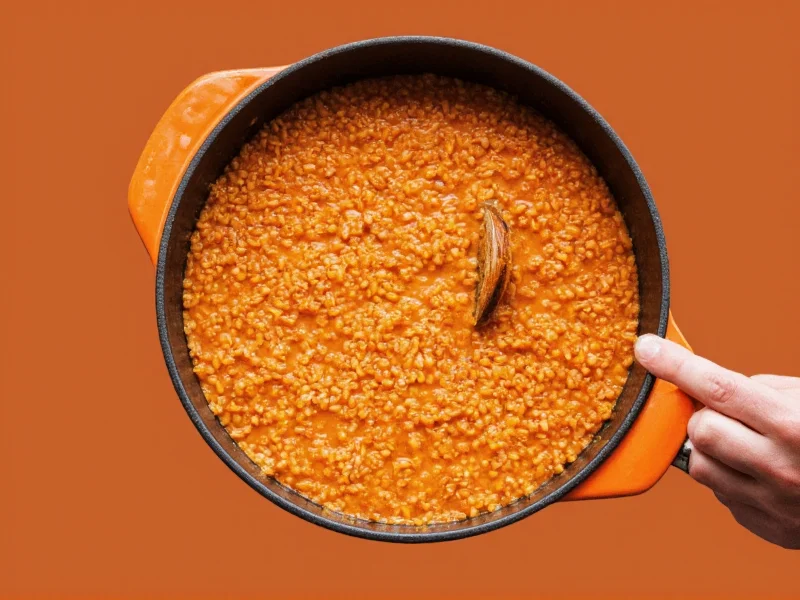Pressure cooking has revolutionized how we prepare pantry staples, and red lentils are among the biggest beneficiaries of Instant Pot technology. These vibrant legumes cook significantly faster than traditional methods while maintaining their delicate texture when prepared with precise measurements. Unlike brown or green lentils that hold their shape, red lentils naturally break down into a creamy consistency perfect for dals and soups, making the Instant Pot's controlled environment ideal for achieving restaurant-quality results at home.
The Science Behind Perfect Instant Pot Red Lentils
Red lentils (masoor dal in Indian cuisine) have a thinner skin and lower fiber content than other lentil varieties, which explains their rapid cooking time and tendency to become creamy. The Instant Pot's pressurized environment raises the boiling point of water, allowing starches to gelatinize faster while minimizing nutrient loss. This scientific advantage means you can achieve perfectly cooked red lentils in one-third the time of stovetop methods without constant monitoring.
Essential Ingredients and Equipment
For basic red lentils, you'll need:
- 1 cup dried red lentils (rinsed)
- 1½ cups water or broth
- ½ teaspoon salt (added after cooking)
- Optional: 1 tablespoon oil, aromatics like onion or garlic
Equipment essentials:
- 6- or 8-quart Instant Pot
- Measuring cups with spouts
- Fine mesh strainer for rinsing
- Wooden spoon for stirring
Step-by-Step Cooking Instructions
Follow these precise steps for foolproof red lentils every time:
- Rinse 1 cup red lentils thoroughly in a fine mesh strainer until water runs clear
- Add lentils and 1½ cups liquid to Instant Pot
- Secure lid, ensuring valve is set to Sealing
- Select Manual or Pressure Cook mode at high pressure
- Set timer for 6 minutes for slightly firm lentils or 8 minutes for creamier texture
- Allow 10 minutes of natural pressure release before quick releasing any remaining pressure
- Carefully open lid away from your face
- Stir in salt and any finishing ingredients
Texture Guide: Avoiding Common Mistakes
Understanding cooking time variables prevents disappointing results. The table below shows how cooking duration affects texture:
| Cooking Time | Natural Release | Resulting Texture | Best For |
|---|---|---|---|
| 5 minutes | 5 minutes | Slightly firm, holds shape | Lentil salads, grain bowls |
| 6 minutes | 10 minutes | Tender but intact | Side dishes, mixed vegetable dishes |
| 8 minutes | 10 minutes | Creamy, partially broken down | Dals, soups, baby food |
| 10+ minutes | 10 minutes | Completely broken down | Thick curries, purees |
Troubleshooting Common Issues
Burn Error: This typically occurs when cooking lentils with tomato-based ingredients or insufficient liquid. Always deglaze the pot thoroughly after sautéing aromatics, and maintain the proper 1:1.5 lentil-to-liquid ratio. For recipes with tomatoes or coconut milk, add these after the initial cooking cycle.
Mushy Results: Overcooking is the primary culprit. Red lentils require significantly less time than other varieties. Stick to 6-8 minutes maximum, and remember that residual heat continues cooking during natural release. For firmer results, reduce natural release time to 5 minutes.
Undercooked Lentils: If your lentils remain hard, check your Instant Pot's pressure function. Older models sometimes fail to reach proper pressure. Ensure the sealing ring is properly seated and the float valve moves freely. Adding an extra ½ cup liquid and cooking 2 additional minutes usually resolves this issue.
Flavor Variations and Culinary Applications
Once you've mastered basic red lentils, experiment with these popular variations:
Classic Indian Dal
Sauté 1 chopped onion, 2 minced garlic cloves, and 1 tablespoon ginger in 1 tablespoon oil until golden. Add 1 teaspoon turmeric, 1 teaspoon cumin, and ½ teaspoon coriander. Stir in rinsed lentils and liquid, then pressure cook for 8 minutes. Finish with fresh cilantro and a squeeze of lemon.
Middle Eastern Mujadara
Cook lentils with 1½ cups broth and ½ teaspoon cumin for 6 minutes. While lentils cook, caramelize 2 thinly sliced onions in olive oil until deep brown. Serve lentils over rice topped with crispy onions.
Simple Red Lentil Soup
Sauté 1 diced carrot and 1 diced celery stalk with aromatics. Add 1 cup lentils, 3 cups broth, and 1 (14oz) can diced tomatoes. Cook for 8 minutes, then blend partially for creamy texture with some whole lentils remaining.
Storage and Reheating Guidelines
Properly stored, cooked red lentils maintain quality for:
- Refrigerator: 5-7 days in airtight container
- Freezer: 3-6 months in portioned containers
Reheat gently on stove with a splash of water to restore moisture. Microwave reheating works well when covered with a damp paper towel to prevent drying. For soups and dals, the flavors often improve after 24 hours as spices meld.
Why Instant Pot Outperforms Traditional Methods
Compared to stovetop cooking, the Instant Pot delivers consistent results regardless of altitude or stove variability. Traditional methods require 15-20 minutes of simmering with careful attention to prevent boiling over or sticking. The Instant Pot's sealed environment preserves more water-soluble nutrients like folate while using less energy. Most importantly, the precise timing eliminates guesswork - crucial for red lentils which can go from perfect to mushy in minutes.











 浙公网安备
33010002000092号
浙公网安备
33010002000092号 浙B2-20120091-4
浙B2-20120091-4